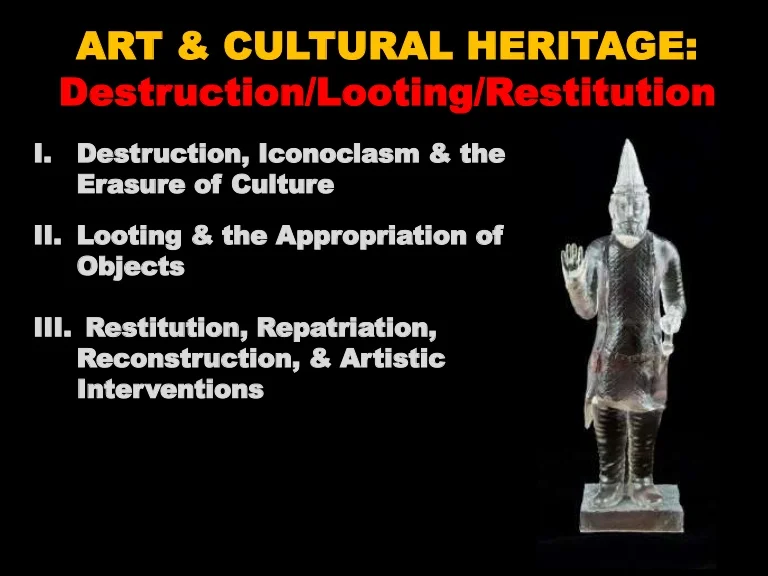What Is The Impact Of Architectural Preservation On Local Identity And Cultural Heritage?

The preservation of cultural heritage is a topic that has garnered significant attention in recent years. Many individuals and organizations are taking steps to ensure that our past is not lost forever. The importance of cultural heritage preservation cannot be overstated. It provides us with a sense of identity and connection to our past. Here are several reasons cultural heritage preservation is important:
- Preserving our history: Cultural heritage preservation allows us to record and safeguard our history for future generations. It allows us to keep our heritage and traditions alive, even as time passes.
- Encouraging tourism: Cultural heritage sites can be a huge draw for tourists. They provide insight into our past, and allow visitors to gain a deeper understanding of our culture and traditions. This can provide a boost to local economies and encourage development in the region.
- Protecting our environment: Cultural heritage sites often exist in natural environments. By protecting these sites, we can also protect the surrounding environment. This includes preserving natural habitats, and protecting flora and fauna that may exist in the area.
- Encouraging creativity: Cultural heritage preservation can inspire future generations to be creative and innovative. It provides a sense of pride in our past and encourages us to build a better future.
- Building stronger communities: Preserving cultural heritage can bring a community together. It provides a shared sense of identity and can help to foster greater community cohesion.
Challenges to Cultural Heritage Preservation:
While the importance of cultural heritage preservation is clear, there are significant challenges to preserving our cultural heritage. These challenges include:
- Lack of funding: Preserving cultural heritage sites can be expensive. Governments and other organizations may be unwilling or unable to provide the necessary funding to ensure that these sites are properly maintained.
- Natural Disaster: Natural disasters, such as earthquakes or floods, can destroy cultural heritage sites. These disasters may occur without warning, making it difficult to take the necessary precautions to protect these sites.
- Human actions: Human actions, such as vandalism or theft, can also damage cultural heritage sites. Without proper security measures in place, these sites may be vulnerable to damage or destruction.
Preserving Cultural Heritage:
There are several steps that individuals and organizations can take to help preserve our cultural heritage. These include:
- Educate the public: Educating the public on the importance of cultural heritage preservation can help to raise awareness and encourage support for these efforts.
- Develop and implement preservation plans: Developing and implementing preservation plans can ensure that cultural heritage sites and artifacts are properly cared for and maintained.
- Secure funding: Funding is essential for cultural heritage preservation efforts. Governments, organizations, and other individuals can provide financial support to help ensure that these sites are properly cared for.
- Implement security measures: Implementing security measures, such as surveillance cameras or security guards, can help to protect cultural heritage sites from vandalism and theft.
- Document cultural heritage: Documenting cultural heritage can help to ensure that it is not lost forever. This includes recording oral histories and creating written records of important cultural events and traditions.
Frequently Asked Questions:
Q: Why is cultural heritage preservation important?
A: Cultural heritage preservation is important because it ensures that our history, traditions, and culture are passed down to future generations. It provides a sense of identity and helps to connect us with our past.
Q: How can I help to preserve cultural heritage?
A: There are several ways that you can help to preserve cultural heritage. These include educating the public, developing and implementing preservation plans, securing funding, implementing security measures, and documenting cultural heritage.
Q: What are the challenges to cultural heritage preservation?
A: There are several challenges to cultural heritage preservation, including lack of funding, natural disasters, and human actions such as vandalism or theft.
Q: Can cultural heritage preservation help to build stronger communities?
A: Yes, cultural heritage preservation can help to build stronger communities. It provides a shared sense of identity and helps to foster greater community cohesion.
Q: What are the benefits of cultural heritage preservation?
A: The benefits of cultural heritage preservation include preserving our history, encouraging tourism, protecting our environment, encouraging creativity, and building stronger communities.
Conclusion:
Cultural heritage preservation is incredibly important. It ensures that our history, traditions, and culture are passed down to future generations. It provides us with a sense of identity and connection to our past. While there are challenges to cultural heritage preservation, there are also steps that can be taken to help ensure that our cultural heritage is preserved. By educating the public, developing and implementing preservation plans, securing funding, implementing security measures, and documenting cultural heritage, we can ensure that our past is not lost forever.




Post a Comment for "What Is The Impact Of Architectural Preservation On Local Identity And Cultural Heritage?"